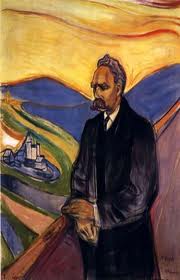Taking the long view on innovation management, one can draw some organization archetypes most commonly implemented. None can be applied as it is to your organization: there is no such thing as “one size fits all” in innovation management. You have to make your selection of best practices, and assess which are appropriate, considering your company status. You have to build your own innovation identity: this is the subject I would like to address in this fourth episode about innovation at large companies.
From the academic and case study reviews included in rapid innovation thesis, 2 main innovation models seem to emerge:
- Thriving innovation model means the innovation culture is at the cornerstone of the corporate company; the company develops interactions both across internal departments and with external resources to complete its innovations. 3M, P&G, Cisco, Sanofi, Renault, the Open source way of working are championing this model.
- Dedicated entity model involves the creation of an autonomous unit pursuing new and uncertain activity lines. Lockheed with its skunk works, Saturn the GM subsidiary, marketed as a “different kind of car company”, Ideo, EDF Business Innovation are concrete tracks of this model.
3M is a typical case of the thriving innovation model, involving a culture of intrapreneurship with some specific rules refined over time, innovation having sustained 3M continuous growth from the beginning to the end of the 20th century. Some of 3M rules are as follows:
- Small autonomous units
- Commitment to R&D
- Technology propagation
- “Lab to market” channel
- Project management
- Reward adapted to innovation
- “Bootleg rule” : 15% free time to personal innovation
- Recruitment focus
- Innovation, a “game of numbers”
- A solution to solve a problem (the post-it story)
- Learning from the past
Going another way, Ideo embody in a modern dedicated entity model the skunk works approach created by Lockheed in the 50’s. At Ideo, they say “We’re not good at innovating because of our flawless intellects, but because we’ve done 2000 products, and we’ve been mindful”. What are the rules of these innovation experts? Very few actually:
- Culture is driven by creativity : recrutiting, stimulating
- Small entities, flat hierarchy
- Crossfuntionality as creativity catalysis
- Fast prototyping and iteration : try it, fix it, try it again
- Innovation framework constantly improved
Taking adavantage of both models was the intention beyond Rapid innovation model, the best of both world … There are many companies in-between which illustrates this blended approach: Oticon, Decathlon, Gore, players in the video game industry, Google, and Apple.
- At Google for instance, innovation is in the core DNA, which links them to the first model; as they enable small teams to investigate disruptive innovation in a flexible framework, they are also close to 2nd model with dedicated entity.
- At Decathlon, they have central R&D, fully interacting with external resources and skills, and they have local R&D supporting brands developments. They manage ambidextruous organization with 2 DNAs.
Gore is one of my favourite innovation style, an amazing example of hybrid innovation champion. Here are some of their new rules of business detailed in The Fabric of Creativity, by Alan Deutschman, which shows that their “culture is as imaginative as their products”:
- The power of small teams
- No ranks, no titles, no bosses
- Take the long view
- Make time for face time
- Lead by leading
- Celebrate failure
There is no Mendeleev classification for innovation models. In the innovation toolbox, we’ve talked about Jaruzelski and Dehoff classifying innovators in need seekers, market readers, and technology drivers, with big, consistent winners in all camps. Gary Hamel also distinguished innovators archetypes in the following taxonomy: tyros, nobel laureates, artistes, cyborgs, born again.
The secret formula for being an innovation champion is still very very secret!
Innovation management is a stategy each company has to develop, leveraging on reference models to build its own way, taking advantage of all situation potentials:
- What are your strengths, what is your story, where do you come from?
- How are the market environment, competition /new entrants, customers portfolio, suppliers, regulation evolving?
- What is your level of expectation, the portfolio balance you have in mind, your tangible innovation objectives?
- What reference models and innovation practices attract you? What will not work in your organization?
In the way to define our innovation strategy, a look at the 10 facets defined by Jeffrey Philipps can also help, positioning where you want to be on the graduation:
- open vs closed innovation:
- skunk works vs broadly participative;
- suggestive vs directed, incremental vs disruptive (also stretching innovation vs “all included” innovation vs disruptive innovation);
- centralized vs decentralized;
- product / service / operations / business model, funding, wisdom of crowd vs defined criteria and experts.
You have to “become the innovator you are”. The only failure you can make is to complete a biaised analysis. And to forget to adapt your strategy over time …

Building your innovation strategy is a primordial essence of your identity, it’s like your “tao”: the road where it goes and you feel like going, where it’s viable and you think you will harness innovation opportunities. Only you can make this path.


15 Comments